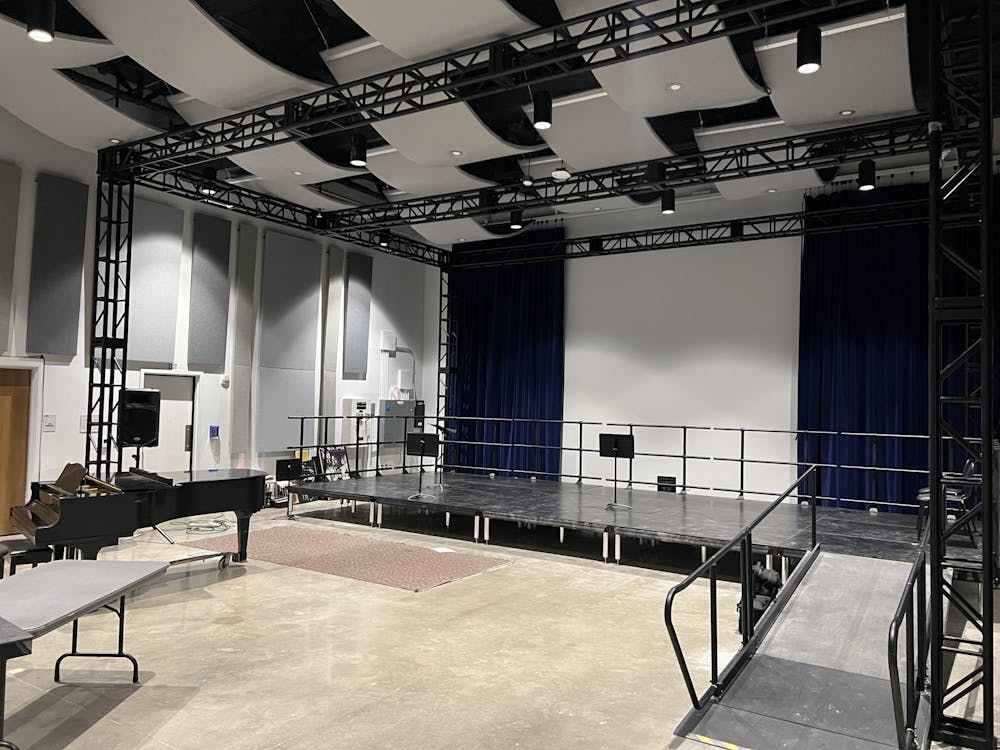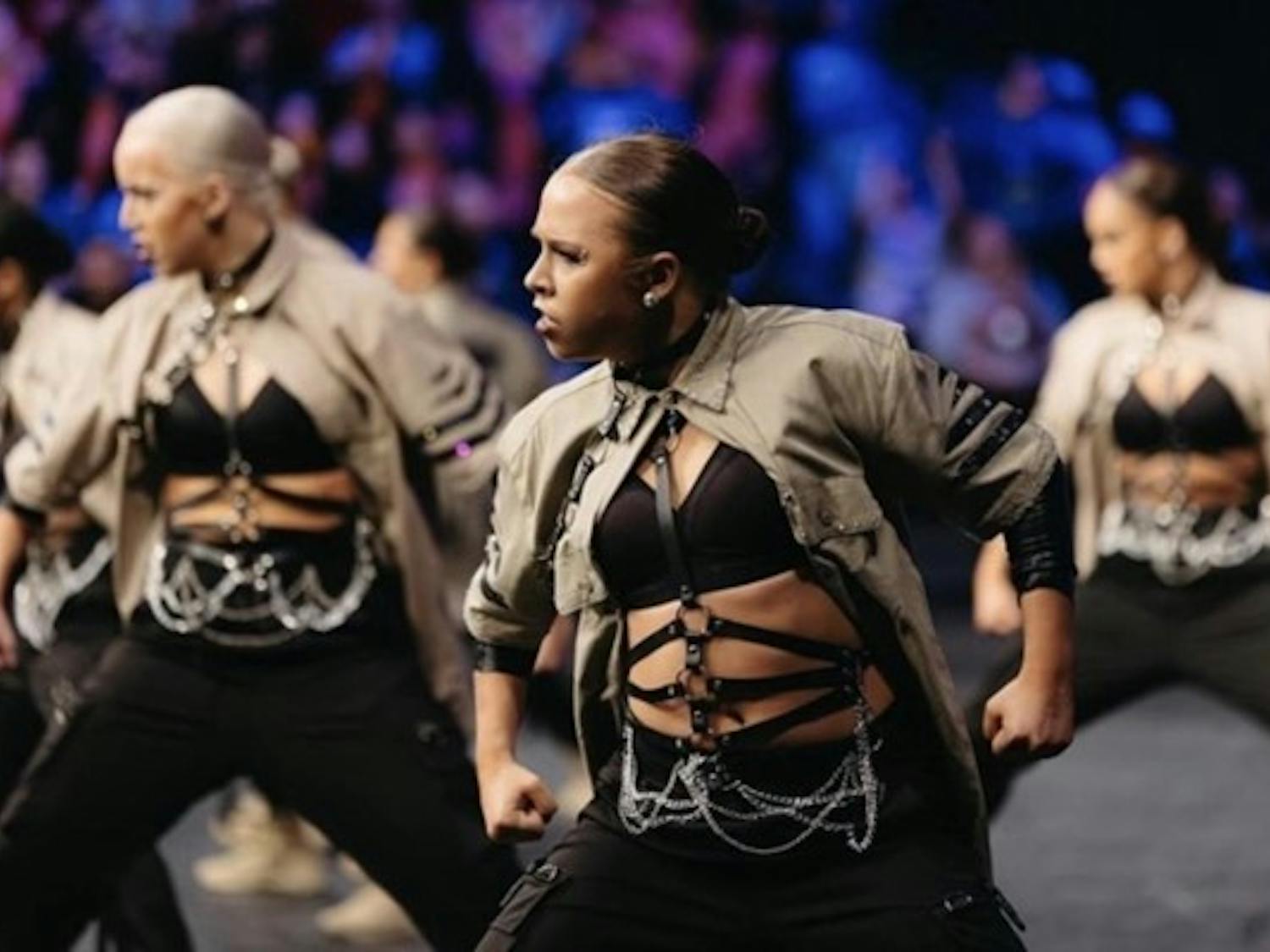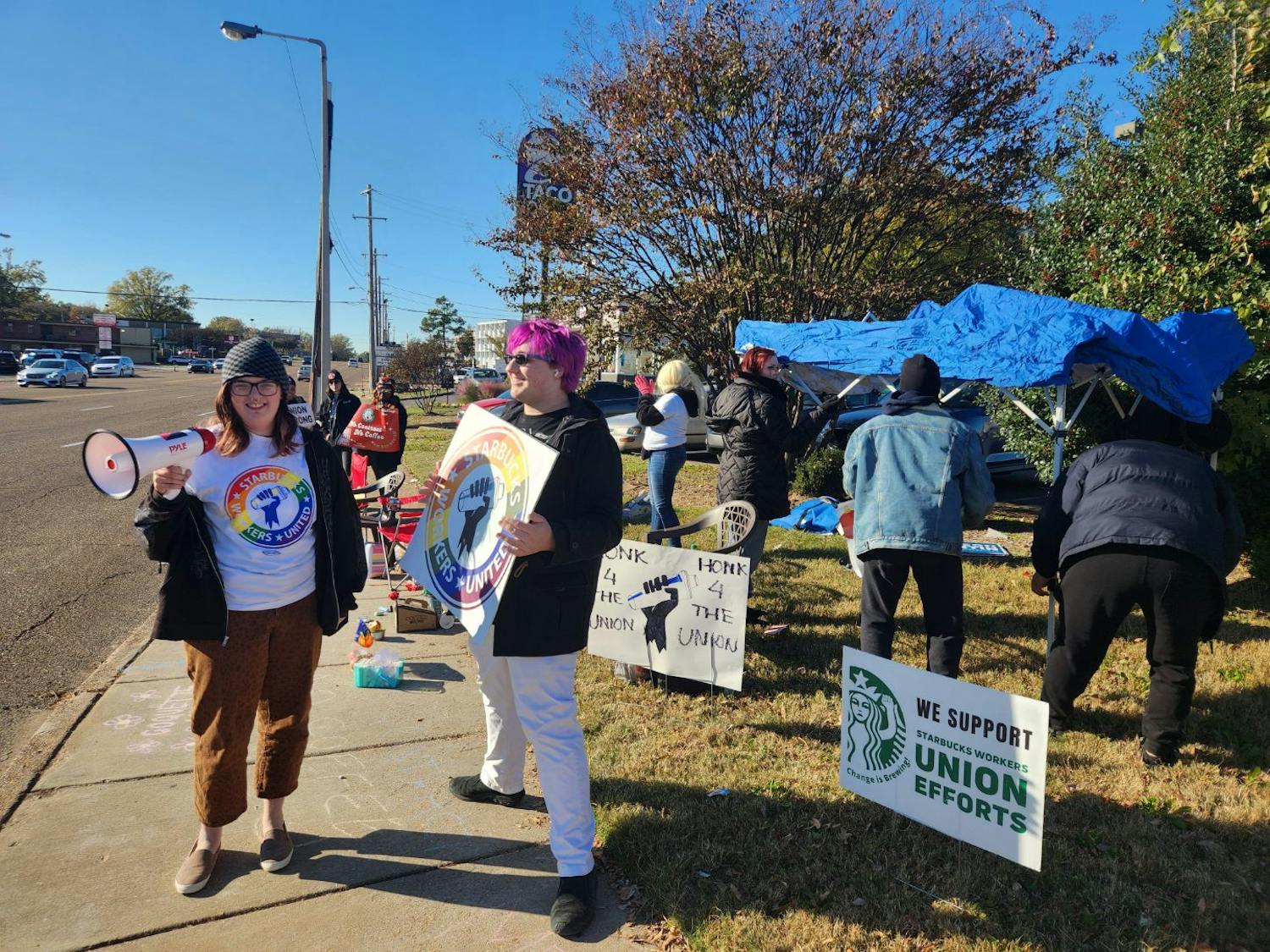The ribbon has officially been cut, and only the future lies in store for the new state-of-the-art music center gracing Central Avenue. Saturday, Feb. 4, marked the opening of the long-awaited Scheidt Family Performing Arts Center with a glitzy gala, which included performances by renowned guest Dione Warwick and several campus music ensembles.
The event celebrated the completion of a six-year project and $40 million facility, which features a choral rehearsal space for 120 singers, an instrumental ensemble space for an orchestra or a band that comfortably seats 90, a jazz and popular music rehearsal space acoustically built for live music, two world-class recording studios and a 900 seat performance hall.
Once the night commenced and the last glass of champagne had been drunk, the halls were again silent. Yet, for many ensemble leaders at the Rudi E. Scheidt School of Music, the sound of possibilities echo loudly throughout the unseasoned facility, off the freshly-laid wood of the auditorium, and into reality. From future collaborations with the Memphis Symphony Orchestra to regular appearances by Opera Memphis and Ballet Memphis, the potential viewing and learning opportunities for students at the University of Memphis have expanded exponentially.
“The Scheidt family, officially Honey and Rudi, wanted to create a facility, equipped with state-of-the-art technology and a world-class performance hall, that gave Memphis students and Memphis musicians a place to develop their skills with the best of the best tools and resources,” said School of Music marketing and communications officer Kristen Russell.
Such resources include acoustically-treated practice rooms and rehearsal spaces, which incorporate the newest technological methods in sound manipulation, such as soundproof curtains and paneling.
Previously, many of the campus music ensembles, including all five choirs, Wind Ensemble and Symphony Orchestra, practiced in the basement of the Legacy Building in Room G6 and G8 and in Room 137 of the Communication and Fine Arts Building. And while the Legacy Building was built to house a music school, it was constructed in 1967 using the available materials at the time, including cinder block walls and linoleum floors, which compared with modern sound treatment technology, prevent the acoustics from reaching maximum potential.
“All of those spaces [in the Legacy Building] are drastically different, so there’s that other challenge of rehearsing in a space that sounds completely different from the performance hall,” said Director of Bands Albert Nguyen.
Similarly, Sound Fuzion, the University’s pop band, held its practices in the Psychology Building since the group’s inception roughly 35 years ago.
Now, with a rehearsal space designated for each ensemble type (instrumental, choral, jazz and popular), this is no longer necessary. The public and commercial interest in a new performing arts venue, combined with the newly available rehearsal and stage space, has already caught the attention of several local professional ensembles looking to collaborate.
Opera Memphis is already booked for performances this year, and the School of Music is presently in negotiation with Ballet Memphis to follow suit. According to Russell, the School of Music also plans to rent out the two world-class recording studios to students, local artists and composers to professionally record audition samples and projects. In addition, established groups like 901 Jazz and the Southern Comfort Jazz Orchestra have expressed an interest in using the center’s rehearsal spaces.
“Now that we have a world-class facility [like the Scheidt family choral room], it offers us the ability to collaborate on a much different scale,” said Dr. Francis Cathlina, the director of choral activities at the School of Music since 2021.
Already, the University Singers have a scheduled joint concert with the Memphis Symphony Orchestra, a “dream collaborator” of Cathlina’s, on March 20.
“It’s one of the first times in a long, long time where the choral area and the orchestral area have joined forces in this capacity,” Cathlina said. “It’s a really exciting endeavor, and this building is what makes it all possible. They get to create bonds with the orchestral and wind players, and that kind of cross-pollination is fruitful and healthy for everyone involved.”
Kristen Russell, the marketing and communications officer for the School of Music, also emphasized the advantage that working with a professional artist and/or ensemble and having that professional experience gives students in the job market.
“We can afford our students these life-changing opportunities that I had, that shape who they are as a musician and allow them to grow in a different way than if [they] were only singing within their choir all four years,” Cathlina said.
To further foster student involvement and growth, now at a much grander scale, Dr. Nguyen revealed that the Wind Ensemble’s first official concert in the Scheidt Family Performing Arts Center will feature dancers from the Department of Theater & Dance and a score written by U of M student Evan Erickson.
“That would never have happened in the old space. It just wouldn’t have the footprint to allow that type of collaboration,” Nguyen said. “That kind of collaboration is definitely what I’m interested in.”
As for future collaborations, Cathlina described a potential collaboration with the Wind Ensemble as an “explosion of energy, artistry, and friendship that I would like to see made possible.”
Michael Parsons, the director of Sound Fuzion, expressed a similar sentiment, revealing a desire to collaborate and “do something epic” with one of the ensembles on campus sometime next year.
“That’s the beauty of being in the same building with the rest of the team. Instead of having to walk a half mile to go have a face-to-face, you’re just right there. We really feel like we’re even more a part of a family and community here,” said Parsons.
Dr. Kevin Sanders, director of the School of Music, said in a 2021 interview that he hoped that the Scheidt Family Music Center "allows [the University] to be a hub for the musical arts in the city where our students can walk across the street and witness a professional-level organization rehearse and perform."
Since the center's opening earlier this month, the performance hall has already housed performances by Dione Warwick, the Bar-Kays, and several campus music ensembles. As the center looks to the future with scheduled collaborations with Opera Memphis and the Memphis Symphony Orchestra, it appears Dr. Sanders' hope is slowly becoming a reality.






